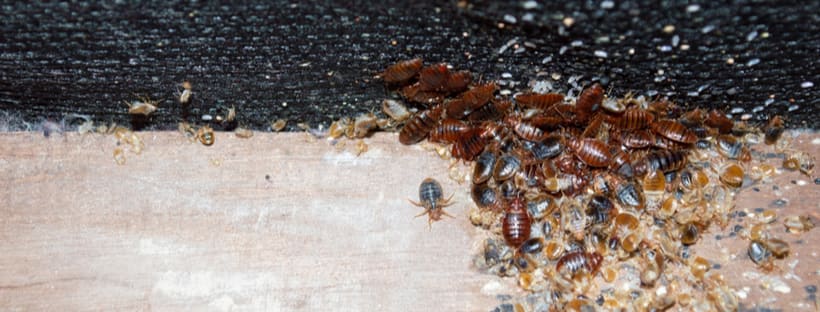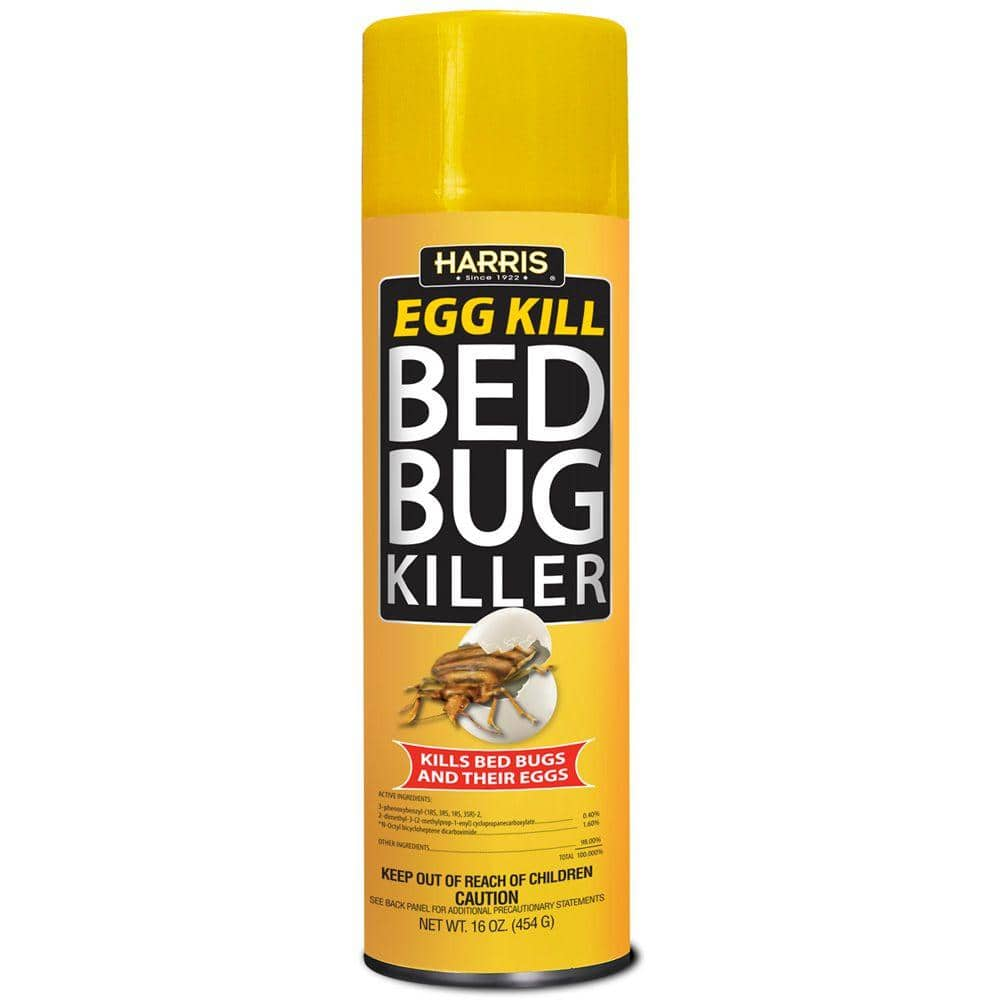To finish bed bugs, use professional pest control services for effective eradication and prevention techniques. Integrate regular inspection and sanitation practices to maintain a bug-free environment.
Dealing with a bed bug infestation can be overwhelming and frustrating. However, with the right approach, you can effectively rid your home of these persistent pests. By combining professional pest control services with proactive prevention strategies, you can ensure a long-term solution to your bed bug troubles.
We will explore the most effective methods for eliminating bed bugs and protecting your home from future infestations. Let’s dive in and learn how to conquer these resilient insects once and for all.
Identifying Bed Bugs
Bed bugs can quickly become a nightmare if left unchecked. Identifying these blood-sucking pests is the first step towards eliminating them from your home. By understanding their physical characteristics and common signs of infestation, you can take proactive measures to ensure a bed bug-free environment.
Physical Characteristics
Bed bugs are small, oval-shaped insects that measure about 5-7 mm in length. They are reddish-brown in color, which can vary depending on whether they have recently fed or not. These bugs have flat bodies with six legs, two antennae, and a segmented abdomen.
Key Takeaway: Bed bugs are small, reddish-brown insects with flat bodies, six legs, two antennae, and a segmented abdomen.
Common Signs Of Infestation
Knowing the common signs of a bed bug infestation is crucial for early detection and treatment. Here are some indicators that you might have bed bugs:
- Bite marks: Bed bugs often leave behind red, itchy bite marks on exposed skin.
- Bloodstains: Look for small bloodstains on your sheets or pillowcases, resulting from crushing bed bugs while you sleep.
- Dark spots: Bed bugs leave behind dark spots on bedding, mattresses, or furniture, which are their droppings.
- Eggs and eggshells: Bed bugs reproduce rapidly, so you may find small, translucent eggs or eggshells near potential hiding spots.
- Musty odor: A strong, unpleasant odor may be present in the infested area, caused by the bed bugs’ scent glands.
- Live bugs: Spotting actual bed bugs, especially in the seams of your mattress, indicates a severe infestation.
Key Takeaway: Look out for bite marks, bloodstains, dark spots, eggs/eggshells, musty odor, and live bed bugs as signs of infestation.
Locating Bed Bugs
Locating Bed Bugs: Finding bed bugs early is crucial for effective eradication. Knowing where to look can help in early detection.
Finding Bed Bugs In Different Areas
Bed bugs can hide in various places within your home, such as:
- Bed frames and mattresses
- Couches and upholstery
- Curtains and rugs
Understanding Bed Bug Behavior
Bed bugs are nocturnal and feed on blood. They are attracted to body heat and carbon dioxide, making them likely to be found near sleeping areas.
Preventing Bed Bug Infestations
Effective measures to prevent bed bug infestations include regular cleaning practices, thorough inspections of bedding and furniture, and taking proactive steps to deter these pesky creatures.
Effective Cleaning Practices
Regularly vacuum your home, focusing on cracks and crevices where bed bugs hide. Wash bedding and clothing in hot water to kill any potential bed bugs or eggs. Declutter your living space to minimize hiding spots for bed bugs.
Bedding And Furniture Inspection
Regularly inspect your mattress seams, headboard, and furniture joints for any signs of bed bugs. Encase mattresses and box springs in special bed bug-proof covers. Seal any cracks and crevices in furniture to prevent infestations.
Eliminating Bed Bugs
Bed bugs can be a persistent and annoying problem to deal with in your home. These tiny, blood-sucking pests can quickly multiply and infest your living space, disrupting your sleep and causing discomfort. However, you don’t have to despair; there are effective ways to eliminate bed bugs and reclaim your home.
Natural Remedies For Bed Bugs
If you prefer a more natural approach to eliminate bed bugs, there are several remedies you can try:
- Vacuuming: Regularly vacuuming your carpets, mattresses, and furniture can help remove bed bugs and their eggs from your home. Pay special attention to cracks, crevices, and seams where they may hide.
- Steam Cleaning: The high temperature of steam can kill bed bugs on contact. Use a steamer to treat infested areas such as mattresses, furniture, and baseboards.
- Diatomaceous Earth: This natural powder is abrasive to bed bugs’ exoskeleton, causing them to dehydrate and die. Sprinkle diatomaceous earth around infested areas and leave it for a few days before vacuuming it up.
Professional Extermination Options
If the infestation is severe or persists despite your efforts, it may be necessary to seek professional help. Professional extermination options include:
- Heat Treatment: Professional exterminators can use specialized equipment to raise the temperature in your home to lethal levels for bed bugs, effectively eliminating them from every nook and cranny.
- Pesticide Treatment: Exterminators may apply insecticides specifically formulated to target and eradicate bed bugs. These treatments are usually targeted, minimizing any potential risks to humans and pets.
- Fumigation: In extreme cases, fumigation may be necessary. This process involves sealing off the entire structure and releasing a fumigant that penetrates all areas, killing bed bugs and their eggs.
Cleaning Up After Bed Bugs
When it comes to dealing with a bed bug infestation, the process doesn’t end with the treatment. After eradicating the bugs, it’s vital to thoroughly clean and dispose of any remaining traces to prevent a re-infestation. Proper cleaning and disposal methods are essential to ensure that the bed bugs are completely eliminated from your living space.
Proper Disposal Of Infested Items
Proper disposal of infested items is crucial in effectively getting rid of bed bugs. Dispose of infested items such as mattresses, furniture, and bedding properly to prevent the spread of bed bugs to other areas of your home. Use heavy-duty trash bags to securely seal these items before disposing of them. Alternatively, you can mark the items as “infested” to alert others if you plan to donate or dispose of them in public areas.
Deep Cleaning Procedures
After discarding infested items, deep cleaning procedures should be performed to eliminate any remaining bed bugs or eggs. Start by thoroughly vacuuming the entire area, including carpets, drapes, and furniture. Use a vacuum cleaner with a HEPA filter to ensure effective removal of bed bugs and their eggs. Additionally, steam clean carpets, upholstery, and other fabric surfaces to kill any remaining bed bugs.

Credit: diypestcontrol.com
Protecting Against Future Infestations
Protecting against future infestations is crucial to ensure that you remain bed bug-free. By adopting preventive measures, you can minimize the risk of another infestation and enjoy peace of mind. Here are some practical steps you can take:
Regular Monitoring And Inspection
Regular monitoring and inspection of your living spaces is essential to detect any signs of bed bug activity at an early stage. Implementing a routine inspection schedule can help you identify any potential infestations before they escalate.
Tips For Travel And Public Spaces
When traveling or spending time in public spaces, there are several precautions you can take to avoid bringing bed bugs into your home. Being mindful of your surroundings and following these tips can help minimize the risk of exposure:
- Inspect hotel rooms and accommodations for signs of bed bugs before settling in
- Use protective encasements for luggage and belongings while traveling
- Avoid placing personal items on upholstered surfaces in public areas
- Wash and heat-dry clothing and belongings after returning from trips
Implementing these preventive measures can significantly reduce the likelihood of encountering bed bugs and safeguard your living spaces from potential infestations.
Addressing Bed Bug Bites
Dealing with bed bug bites can be a frustrating experience, but addressing them promptly is crucial for your comfort and overall well-being. In this section, we will explore effective treatments for bed bug bites and discuss how to manage skin irritation caused by these resilient pests. Read on to find relief from these pesky insect bites.
Treatment For Bed Bug Bites
1. Cleansing the Affected Area
Start by washing the bitten area with mild soap and water. Use a gentle, fragrance-free cleanser to avoid further irritation.
2. Applying Cold Compress
To reduce swelling and itchiness, apply a cold compress or ice pack wrapped in a thin cloth to the affected area for 10-15 minutes at a time.
3. Over-the-Counter Anti-Itch Creams or Lotions
Consider using an over-the-counter anti-itch cream or lotion containing ingredients like hydrocortisone or calamine. These can help alleviate itching and provide temporary relief.
4. Natural Remedies
Some individuals find relief using natural remedies, such as aloe vera gel, tea tree oil, or witch hazel. These substances may have soothing properties that can help reduce itching and inflammation.
Managing Skin Irritation
1. Avoid Scratching
While it may be tempting to scratch the affected area, resist the urge to do so. Scratching can break the skin and increase the risk of infection.
2. Keep the Area Clean and Dry
Maintain good hygiene by washing the area gently with mild soap and water. Afterward, pat it dry with a clean towel or let it air dry to prevent moisture buildup.
3. Use Moisturizer
Apply a fragrance-free moisturizer to keep the skin hydrated and prevent excessive dryness, which can exacerbate itching and irritation.
4. Avoid Irritating Substances
Avoid applying harsh chemicals, perfumes, or other potential irritants to the bitten area, as they can further irritate the skin and prolong the healing process.

Credit: www.erdyes.com
Seeking Professional Help
Seeking Professional Help: When dealing with bed bugs, sometimes seeking professional pest control services is necessary.
When To Consult Pest Control Services
If attempts to eliminate bed bugs using DIY methods fail, it’s time to consider professional pest control services.
Understanding Legal Obligations
Many locations have laws and regulations regarding bed bug infestations, which may require professional intervention.

Credit: www.homedepot.com
Frequently Asked Questions On How To Finish Bed Bugs?
How Do Bed Bugs Enter Your Home?
Bed bugs can hitch a ride on clothing, luggage, or used furniture, and may also enter through cracks and crevices.
What Are The Signs Of A Bed Bug Infestation?
Look for red itchy welts on the skin, tiny bloodstains on sheets, or dark spots (bug feces) on bedding.
What Are Effective Ways To Eliminate Bed Bugs?
Options include hiring a professional exterminator, using hot water to wash bedding, and vacuuming thoroughly.
Conclusion
To finally eliminate bed bugs from your home, take immediate action by implementing the methods discussed in this blog post. By combining thorough cleaning, professional extermination, and preventive measures, you can ensure a bed bug-free environment. Remember to regularly inspect your surroundings and promptly address any signs of infestation.
With persistence and diligence, you can successfully bid farewell to these unwanted pests and enjoy a peaceful and comfortable sleep.
Related posts:

I’m MD Tanvir, and I bring years of expertise gained from working closely with pest control companies to the forefront. My journey in the industry has inspired me to launch Bug Battler, a platform aimed at equipping people with the know-how to combat pests autonomously. Through Bug Battler, I aim to empower individuals with practical insights to tackle pest infestations effectively.

